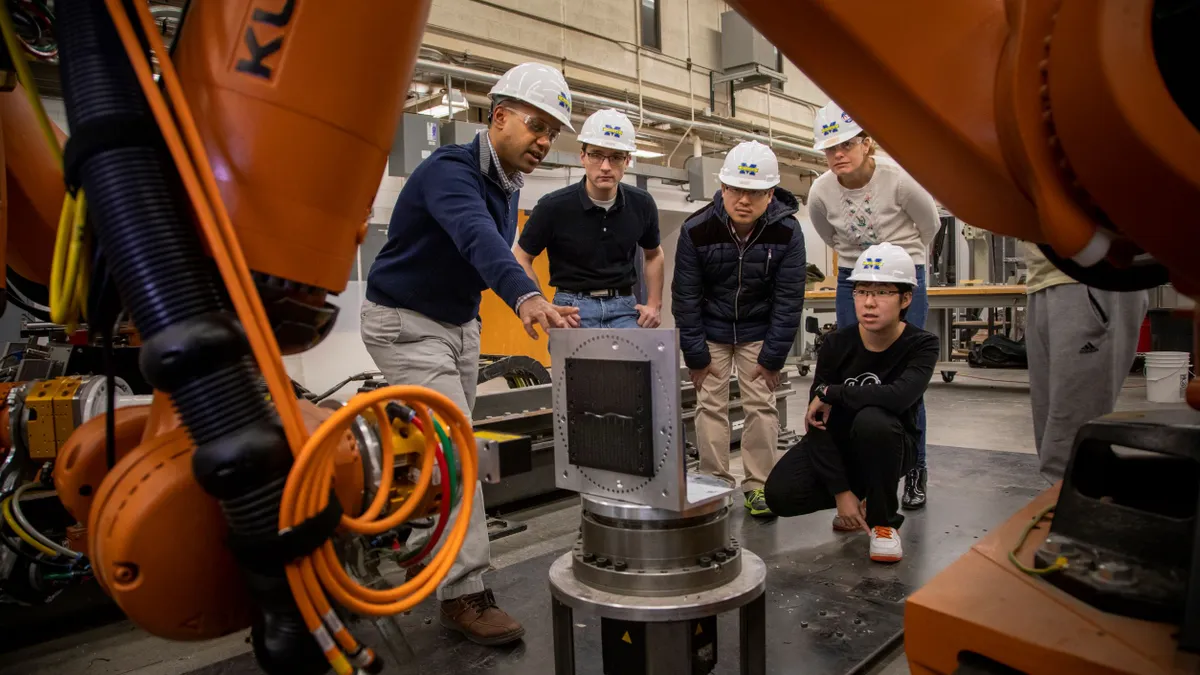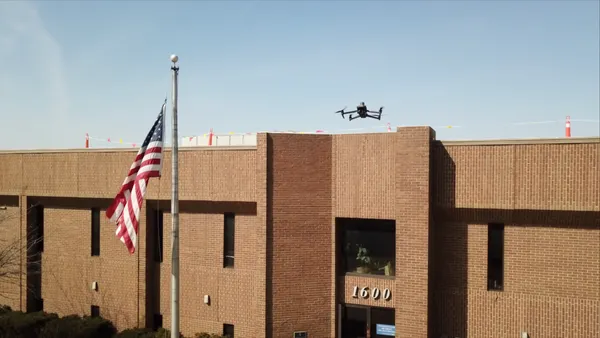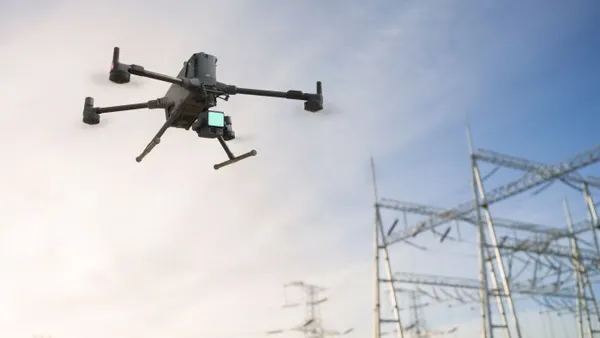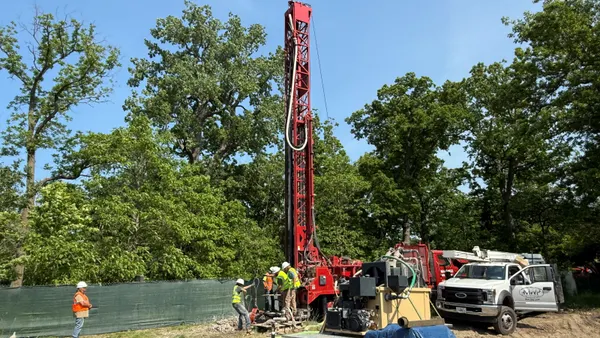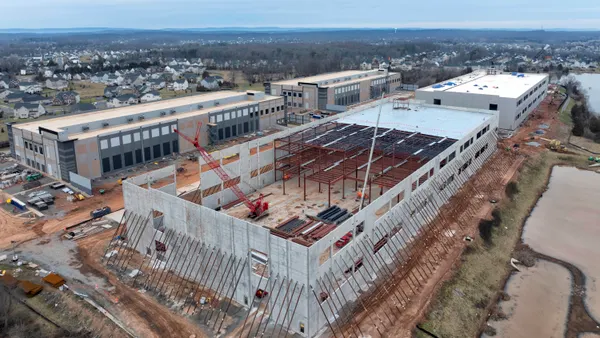Dive Brief:
- A portion of a $2 million National Science Foundation grant to the University of Michigan will look at whether robots could be used as assistants to human workers on construction sites.
- Working with machines and technology from Germany-based manufacturer KUKA, the project aims to allow human workers to use interactive task learning technology to teach robots to perform construction tasks.
- The resulting symbiotic human-robot teams could then be widely deployed in the construction industry, according to a KUKA release shared with Construction Dive, with the robot performing physically strenuous tasks and collaborating with human supervisors to improvise when unforeseen work conditions are encountered.
Dive Insight:
Construction work is often dangerous, dull, repetitive and can lead to short-term and long-term injuries as well as early retirement. Robotic assistants “have the potential of alleviating some of these issues in construction and helping overcome the sustained shortage of skilled workers that the industry has been experiencing,” said Vineet R. Kamat, professor of civil and environmental engineering and a member of the research team at U of M.
Part of the research includes improving automation technology in order to make robots intelligent enough to serve as productive co-workers to human supervisors, much like a human trainee, according to Kamat.
The team is focused on methods to enable robots to sense, learn, plan and manipulate construction materials, including the installation of heavy drywall panels. While a human worker would have to stand on stilts for long hours to lift and place the panels at various heights in a building or a home — a process that can easily lead to back problems and injuries — this is the kind of work that is ideal for a robot supervised by people, Kamat said.
Human workers will need some training in order to be able to interact with and supervise robotic assistants, Kamat said.
"Such training can occur on the job, as well as through part of their technical training in trade school or through their worker union’s skill building activities and training," Kamat said. "Teaching a robot new tasks can be done within a few days, particularly using physical demonstrations, as well as virtual reality demonstrations using a method that we have developed in our work."
Three KUKA KR QUANTEC robot models are being utilized as part of the research at the U of M labs. The primary differences are the size of the robots and their corresponding payload and range of motion, according to Kamat. They all do similar things, but the larger models can handle bigger objects and reach further than the smaller ones.
Kamat said prices could range from $50,000 for small robots to $125,000 for larger robots. Additionally, other manufacturers also make similar robotic arms that could also work with the outcomes of the team’s research, Kamat said.
The KR 120, which has been mounted on an external gantry, is being studied for more static applications in factory prefab/pre-manufacturing of construction assemblies. For mobile applications, the KR 60 has been placed on a mobile hydraulic excavator platform and is being studied as the type of robotic assistant that would be moved around to work on different job sites.
Preparing for the future
A prototype robotic assistant could be in place on a real construction site in less than two years, and Kamat anticipates that robotic assistants on jobsites will be a reality in about five to 10 years.
"Already in our lab, we are working with full-scale robots that would directly be deployed onto real construction sites," Kamat said.
For those in the construction industry, however, the biggest question is if these robotic assistants are meant to eventually replace human workers entirely. But because the robots are semi-autonomous, this means that there will always be a need for high level instructions from a human supervisor, although some of the tasks can be performed without human supervision, Kamat said.
"Semi autonomy allows human-robot collaborative work that allows each agent, human and robot, to contribute what they are best at to the performance of work," Kamat said.


